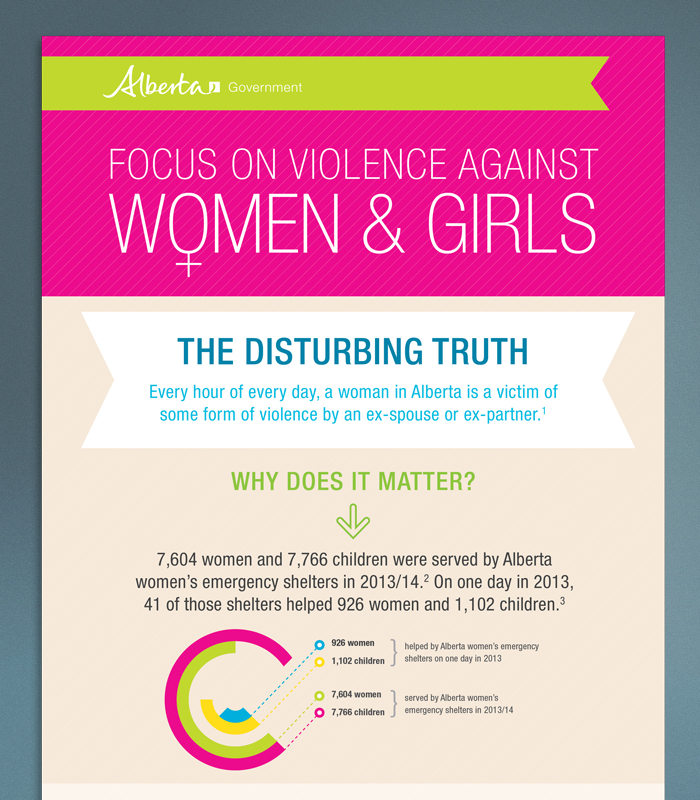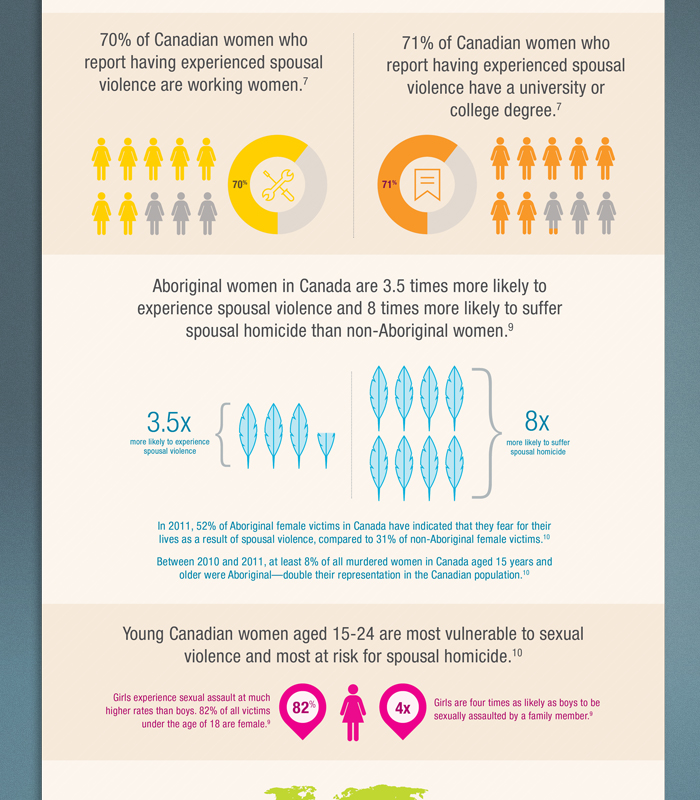While there has been progress in the women’s movement, there remains a devastating gap between how men and women are treated. Women and young girls continue to be subjected to a devastatingly high amounts of violence. The movement for women's rights is international in its scope. This year, United Nations Secretary-General’s Campaign UNiTE to End Violence against Women invites individuals to “Orange” their neighbourhood. The colour orange was chosen as it is a bright and optimistic colour, representative of a world free from violence against women and girls. The campaign takes place over 16 days, which began on November 25th and will be ending on December 10th.
The infographic below, published by the Alberta Government, highlights the disturbing data about the prevalence of violence against women in Alberta and across Canada.
The infographic states that every hour, a woman in Alberta is the victim of some form of abuse from an ex-spouse or an ex-partner. This situation is not unique to Alberta, it holds true for the other provinces and territories in Canada. Aboriginal women in Canada are 3.5 times more likely to suffer from spousal violence, and 8 times more likely to suffer spousal homicide. Women from a low socioeconomic status are also more likely to be victims of domestic violence.
Abusive situations can be incredibly difficult to leave. Take, for example, a young mother who is subjected to abuse in her household. While she may feel that it may be in her best interest to leave, there are many barriers standing in her way preventing her from leaving. Factors include fear of retaliation from the abuser, a mother’s fear about her ability to provide for her child independently, costs associated with relocation and the fear of becoming homeless. The stigma associated with being labelled as a victim of domestic abuse is an additional barrier that these women face.
Violence against women and young girls is an issue that tends to be overlooked in our communities. Many of us are largely unaware of its presence and most cases are unreported to police. At times, when these women come forward, they have to face victim-blaming stereotypes. There should be no room for such a mentality in society today, yet such stereotypes persist. Victim-blaming is an example of how the community at large fails women escaping domestic abuse.
When we consider the difficulties women living in abusive homes face, the need for housing and support for women coming from abusive situations becomes all too clear. Shelters can provide women and their children with access to vital supports, including counselling, help finding work and most importantly a safe and secure place to stay. Without access to such supports, women, including those with young children, may be faced with living on the street where they are at increased risk of being witness and victims of physical and sexual violence. As a society, it is our duty to help vulnerable women and their children and take a stand to prevent violence against women and girls.



